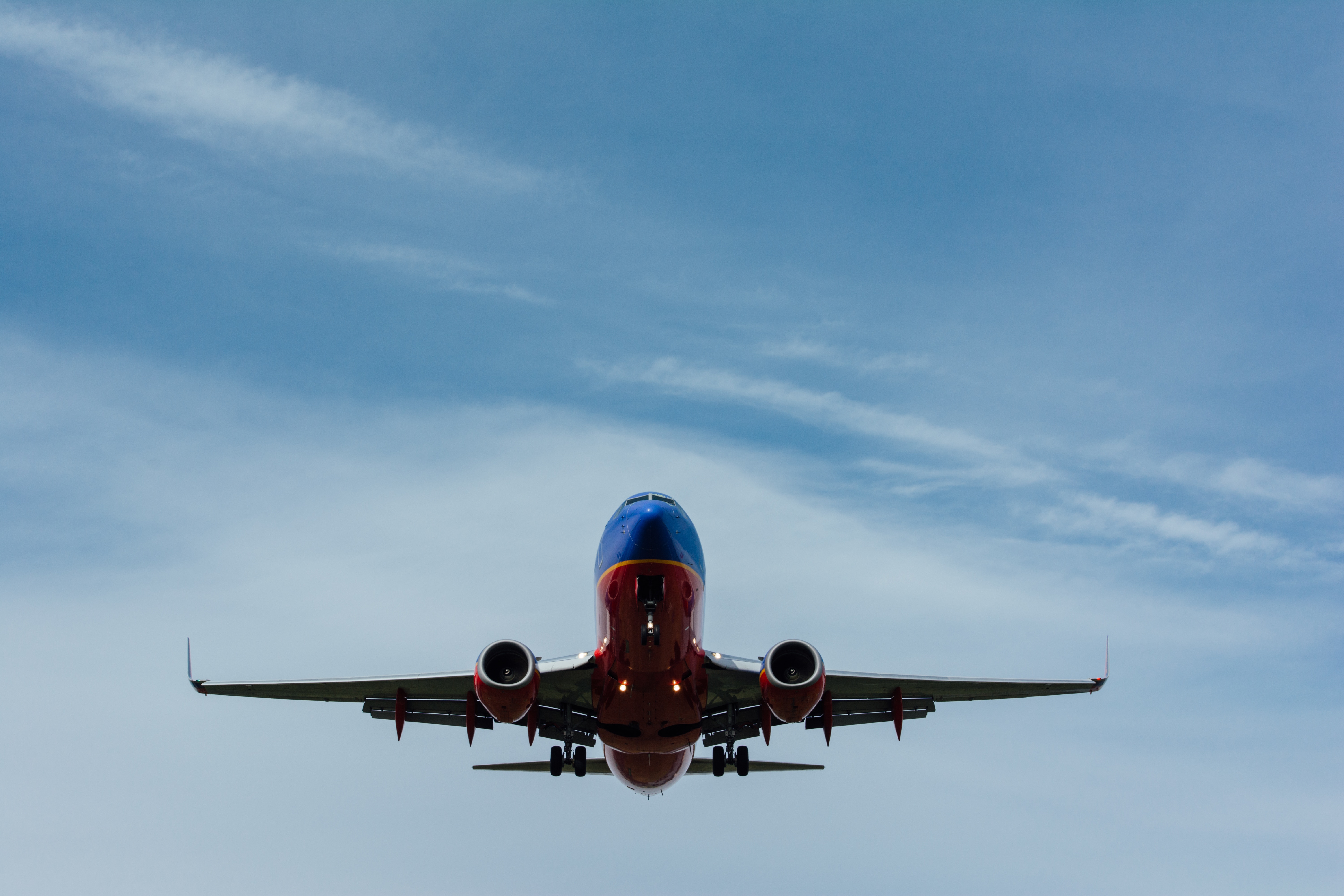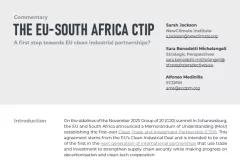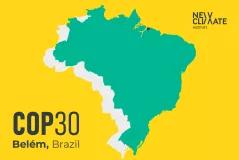
If airlines are allowed to use all available offset credits certified by programmes such as the UN’s Clean Development Mechanism and other voluntary standard bodies under a new global scheme to address international aviation emissions, the scheme will not truly compensate the sector’s growing CO2 emissions. To achieve the aviation scheme’s objective of carbon neutral growth, policy-makers must adopt robust criteria on the types of offset credits that are accepted. The rules should be designed to ensure that the scheme supports the development of new emission reduction projects or targets existing projects that would stop reducing emissions without further financial support. New research published in Nature Climate Change outlines the climate implications of various eligibility scenarios for offset credits.
International aviation accounts for approximately half a billion tonnes of carbon dioxide emissions a year and has an even wider impact on the climate from other (non-CO2) emissions. The sector’s carbon emissions are growing rapidly and are projected to double by 2035. By that stage CO2 emissions from international aviation could exceed those of Japan, currently the world’s fifth largest emitter. Despite their magnitude, international aviation emissions are largely unregulated.
Slow progress, but a global policy is in sight
Our growing appetite for air travel is a major contributor to climate change. The Kyoto Protocol mandated the UN’s international civil aviation organization, ICAO, to address emissions in 1997. Almost two decades later, in 2016, following the landmark Paris Agreement and the inclusion of aviation in the EU’s emissions trading system, ICAO adopted the Carbon Offsetting and Reduction Scheme for International Aviation, or CORSIA. The scheme allows the sector’s CO2 emissions to grow unchecked until 2020, after which most additional growth should be compensated through emission reductions in other sectors.
A package setting out rules of the scheme was adopted by ICAO’s members in June 2018. However, at this stage, important decisions are yet to be taken and stakeholders awaiting further clarity. To be effective, CORSIA still has to address several challenging issues, such as ensuring the quality of offset credits and avoiding that emission reductions are accounted twice, i.e. in the generating country and under CORSIA. Addressing one issue in particular continues to be postponed by ICAO policy makers: critical decisions on which offset credits are eligible for use will significantly influence the impact of the scheme on the climate.
Offsetting aviation emissions could be a reasonable approach in the short-term…
The Paris Agreement calls for a peak in global greenhouse gas emissions as soon as possible, and to rapidly reduce emissions thereafter to reach net zero by the second half of this century. CORSIA aims to offset and reduce emissions so that the sector delivers carbon neutral growth from 2020. Reducing emissions is a challenge for the aviation sector. There is little appetite to dissuade us from flying. And the technological options to reduce emissions are limited in the short- to medium-term. Compensating elsewhere for growth in aviation emissions seems a reasonable option until new technologies are available to reduce aviation’s own emissions – as long as the option to offset, rather than reduce emissions, does not further delay the introduction of new low-carbon technologies.
…but picking the right offset credits is critical; allowing all offset credits from approved programmes is unlikely to lead to real compensation for aviation’s emissions
Offsetting emissions only achieves carbon neutrality if the investments trigger emission reductions that would not have happened anyway. This means that demand created by CORSIA for offsets should drive the development of new emission reduction projects, or target existing projects that would not continue reducing emissions without further financial support.
The UN’s Clean Development Mechanism (CDM) is the world’s largest offsetting programme to date. More than 8,000 projects or programmes of activities are registered under the mechanism, and almost 2 billion Certified emission reduction units (CERs) have been issued to date. The emission reductions delivered by these projects are likely far greater, but for many projects the costs associated with requesting CERs are insufficiently compensated by the current market price. A large number of projects have therefore stopped requesting the issuance of CERs, but still continue reducing emissions.
Our research looked into registered CDM projects that could request issuance of CERs in response to demand signals from CORSIA for emission reductions in the period 2013 to 2020 and we estimated the marginal cost to supply CERs from these projects. Although this is only one of several possible offset sources under consideration by policy makers, we find already that, without restrictions on offset eligibility, CORSIA will not incentivise any further emission reductions beyond those that will happen without the scheme and will also not provide price signals that reward previous investments in CDM projects. If ICAO allows airlines to use any offset credits to compensate for their emissions, then most operators will seek out the cheapest credits. The cheapest credits are most likely to come from projects that would continue reducing emissions even without new demand.
“With unrestricted supply, CORSIA demand may neither drive development of new emission reduction projects, nor target existing projects in need of further financing to reduce emissions.”
There are plenty of such projects to supply all of the demand under CORSIA, with room to spare: our research indicates that existing projects registered under the CDM alone could supply up to 4 billion CERs, each representing one avoided tonne of CO2, for less than €1 per unit in the period up to 2020. The vast majority of this supply comes from projects that, once built and operating, receive alternative sources of revenue to those from the sale of emission reduction credits. For example, wind projects that receive electricity market revenues. For most of these projects it makes economic sense to continue their emission reduction activities, even though they may not achieve the return on investment expected at the project outset.
Current projections suggest around 1.6-3.7 billion tonnes of CO2 may need to be offset under CORSIA over the proposed timeframe for the scheme from 2021 to 2035. With unrestricted supply, CORSIA demand may neither drive development of new emission reduction projects, nor target existing projects in need of further financing to reduce emissions. It is also unlikely to help disenchanted project developers realise a return on their initial capital investments, since the price level for credits will remain so low that it offers scant margin on top of the administrative costs of credit verification and issuance.
Targeted eligibility restrictions can make a huge difference to the scheme’s impact
If ICAO were to implement robust eligibility restrictions for offset credits, it would help to drive emission reductions that might otherwise not occur. We have analysed two main options.
The ICAO Assembly resolution explicitly mentions the option of applying a “vintage and timeframe” restriction within the eligibility criteria for offsets. This could be defined to limit the supply of offset credits to either emission reductions taking place or projects starting after a certain date. An effective rule would restrict supply such that new projects need to be developed to meet the demand expected from CORSIA. The best way to do this would be to only allow credits from projects where the investment decision was made after ICAO has adopted rules that provide certainty to the private sector which offset credits are eligible. Indeed, this is the approach favoured by EU member states who advocate that projects should only be eligible to supply CORSIA if they start after 2020.
An additional option is to only allow offset credits from project types that are likely to need further financing to continue reducing emissions. We have carried out an extensive survey of CDM projects and identified the project types in specific host countries that are likely to require further financial support to continue their activities. These “vulnerable” projects – for example, which reduce methane emissions or industrial waste gases – could supply up to 770 million CERs for their emission reduction activities between 2013 to 2020. The longer it takes to finalise the eligibility criteria under CORSIA, the smaller this potential supply may be; the most vulnerable of these projects are likely to cease emission reduction activities soon or may have already done so. If offset eligibility were restricted to credits from vulnerable projects, the remaining demand from the CORSIA would create demand for new projects.
Under current proposals CORSIA is unlikely to do much to reduce the growing emissions actually coming out of aircraft. If the eligibility criteria for credits to compensate for these emissions are not strict enough, offsetting may not make enough of a difference either.
NewClimate Institute, together with Lambert Schneider and further partners, has conducted a series of research activities, the findings of which were recently set out in a peer-reviewed letter entitled “Robust eligibility criteria essential for new global scheme to offset aviation emissions” published in Nature Climate Change. NewClimate Institute received funding from the German Emissions Trading Authority at the German Environment Agency (DEHSt/UBA) and the German Federal Ministry for the Environment, Nature Conservation and Nuclear Safety (BMU). The authors of this post bear sole responsibility for its content. The opinions expressed in this post do not necessarily reflect the official opinions of the funders.







